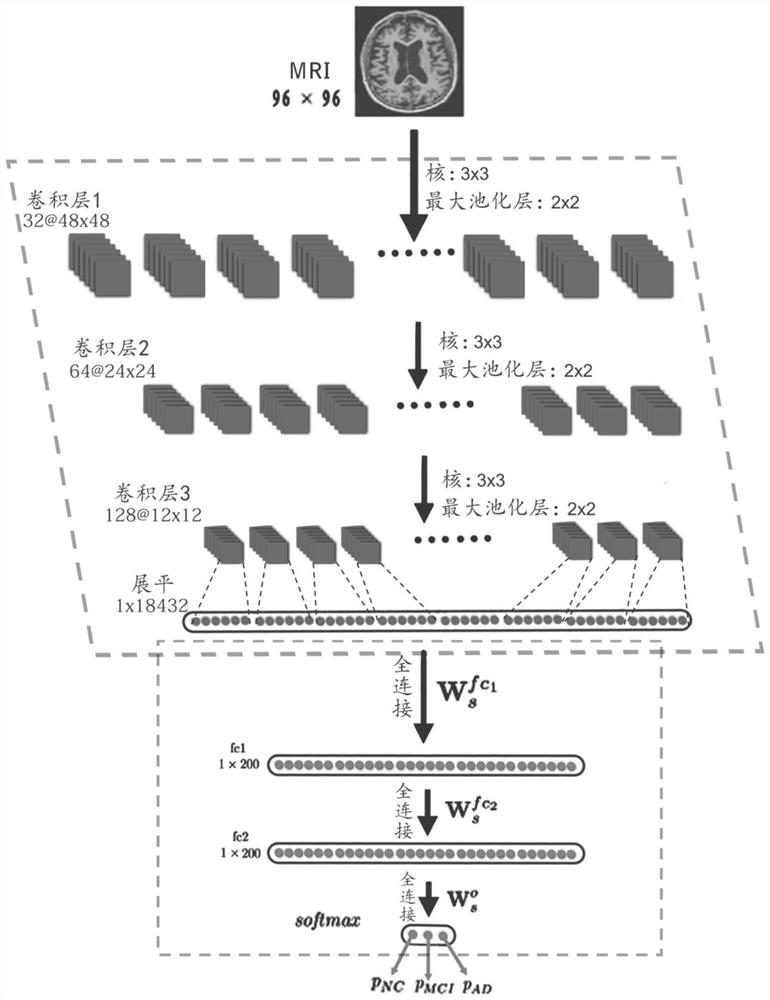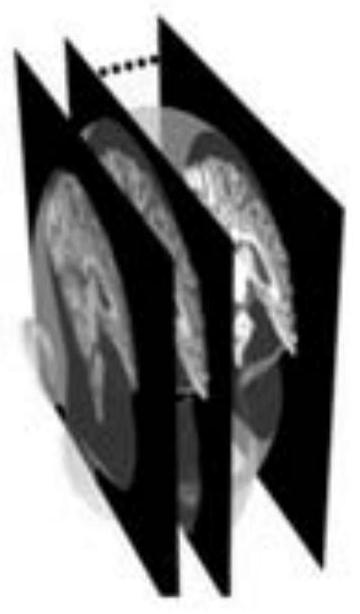A medical image processing device and method using convolutional neural network
A convolutional neural network and processing device technology, which is applied in the field of medical image processing devices, can solve problems such as unavailable nuclear magnetic resonance imaging, difficult technical solutions, and impossible use.
- Summary
- Abstract
- Description
- Claims
- Application Information
AI Technical Summary
Problems solved by technology
Method used
Image
Examples
Embodiment approach 1
[0022] Embodiment 1 Utilizes the data of the Alzheimer's Disease Neuroimaging Initiative (ADNI for short) in the United States to realize the image processing and analysis of MRI in the present invention on the MRI image data of the cranium and the image data of the whole brain technical solutions. Download cranial MRIs of clinically confirmed Alzheimer's disease (AD), amnestic mild cognitive impairment (MCI) and normal aged group (NC) from the official website of the Alzheimer's Disease Neuroimaging Program in the United States image data,
[0023] The data of the Alzheimer's disease neuroimaging project in the United States, 3013 scan results (scans), 321 subjects (subject), can be divided into training set, verification set and test set
[0024] The condition of the training set
[0025]
[0026] The case of the validation set
[0027]
[0028] The case of the test set
[0029]
[0030] Whole-brain three-dimensional data of the above-mentioned cranial MRI data ...
Embodiment approach 2
[0040] Embodiment 2 uses the data of the Alzheimer's Disease Neuroimaging Initiative (ADNI for short) in the United States to realize the technical solution of the present invention for processing and analyzing the image data of the whole brain, which is the MRI image data of the cranium. Download cranial MRIs of clinically confirmed Alzheimer's disease (AD), amnestic mild cognitive impairment (MCI) and normal aged group (NC) from the official website of the Alzheimer's Disease Neuroimaging Program in the United States image data,
[0041] The data of the Alzheimer's disease neuroimaging project in the United States, 3013 scan results (scans), 321 subjects (subject), can be divided into training set, verification set and test set
[0042] The condition of the training set
[0043]
[0044] The case of the validation set
[0045]
[0046] The case of the test set
[0047]
[0048] Whole-brain three-dimensional data of the above-mentioned cranial MRI data were obtain...
Embodiment approach 3
[0059] Embodiment 3 utilizes the data of the Alzheimer's Disease Neuroimaging Initiative (ADNI for short) in the United States to realize the technical solution of the present invention for processing and analyzing the whole brain image data of the MRI image data of the cranium. Download cranial MRIs of clinically confirmed Alzheimer's disease (AD), amnestic mild cognitive impairment (MCI) and normal aged group (NC) from the official website of the Alzheimer's Disease Neuroimaging Program in the United States image data,
[0060] The data of the Alzheimer's disease neuroimaging project in the United States, 3013 scan results (scans), 321 subjects (subject), can be divided into training set, verification set and test set
[0061] The condition of the training set
[0062]
[0063] The case of the validation set
[0064]
[0065] The case of the test set
[0066]
[0067] Whole-brain three-dimensional image data of the above-mentioned cranial magnetic resonance image...
PUM
 Login to View More
Login to View More Abstract
Description
Claims
Application Information
 Login to View More
Login to View More - R&D
- Intellectual Property
- Life Sciences
- Materials
- Tech Scout
- Unparalleled Data Quality
- Higher Quality Content
- 60% Fewer Hallucinations
Browse by: Latest US Patents, China's latest patents, Technical Efficacy Thesaurus, Application Domain, Technology Topic, Popular Technical Reports.
© 2025 PatSnap. All rights reserved.Legal|Privacy policy|Modern Slavery Act Transparency Statement|Sitemap|About US| Contact US: help@patsnap.com



